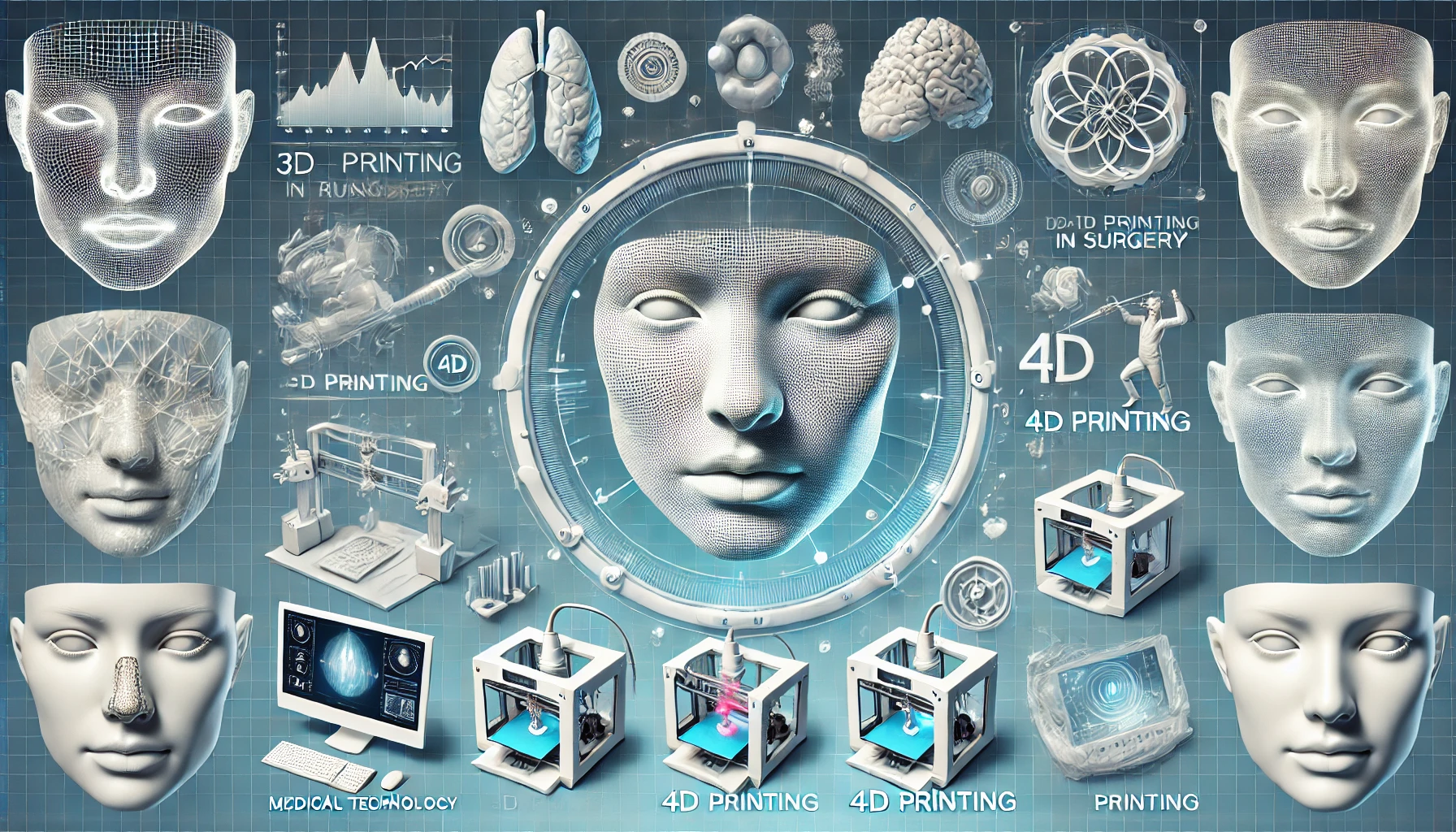Latest Technologies of Rhinoplasty
The Revolutionary Impact of 3D and 4D Printing Technologies in Rhinoplasty
Introduction: The Role of 3D and 4D Printing Technologies in Rhinoplasty Surgery
Rhinoplasty is one of the most complex and precision-demanding procedures in aesthetic surgery. In recent years, three-dimensional (3D) and four-dimensional (4D) printing technologies have revolutionized this field. These innovations contribute significantly to every phase of the rhinoplasty process, from surgical planning to post-operative recovery. Additionally, personalized surgical guides and implants created using 3D printing enable more precise outcomes and improved patient satisfaction.
In this article, we will explore the impact of 3D and 4D printing technologies on rhinoplasty, including clinical research and how surgeons are benefiting from these advancements.
Enhanced Precision with 3D Printed Surgical Guides
One of the most noteworthy applications of 3D printing in rhinoplasty is the creation of surgical guides. Herrero Antón de Vez and his team demonstrated that 3D printed surgical guides offer significant precision, particularly in dorsal hump reduction surgeries. These guides not only speed up the surgical process but also minimize error margins. Moreover, their use allows patients to develop a better understanding of the surgical procedure and helps manage expectations more realistically.
By using 3D printed guides, surgeons can make more accurate incisions, leading to results that are more consistent and predictable. This technology shortens surgery time and reduces the likelihood of errors, thereby enhancing patient satisfaction.
Pre-Surgical Use of 3D Photo Models
Another significant advancement is the conversion of 3D photo images into life-size models. Suszynski and colleagues emphasized the value of these models for pre-surgical consultations and as intraoperative references. Life-size models enable patients to visualize potential post-surgery results, helping them make more informed decisions. This reduces the risk of post-surgical surprises and strengthens patient-surgeon communication.
Additionally, these models serve as valuable references during surgery, enabling more precise and predictable outcomes. 3D models used in pre-surgical planning help surgeons better understand the nasal anatomy and tailor solutions more effectively to each patient’s unique needs.
3D Printed Implants: Innovative Solutions for Nasal Tip Surgery
Another groundbreaking application in rhinoplasty is the use of 3D printed implants. Wee and his team investigated the use of policaprolactone (PCL) 3D printed implants in nasal tip surgery. These innovative implants demonstrated significant improvements in the nasolabial angle and tip projection, with no major complications.
3D printed implants offer surgeons greater control and flexibility, while patients benefit from more natural and aesthetically pleasing results. Furthermore, the ability to customize these implants for each individual ensures that they perfectly align with the patient’s facial anatomy. This not only enhances aesthetic outcomes but also accelerates post-surgical recovery.
3D Surface Imaging and Physical Nasal Models
3D surface imaging technologies also play a crucial role in rhinoplasty surgical planning. Researchers like Weissler and De Greve have highlighted how these technologies improve both surgical planning and post-surgical outcomes. Physical nasal models provide surgeons with a reference during the operation, making post-surgical results more predictable.
Additionally, using 3D printed biocompatible scaffolds for tissue regeneration marks the beginning of a new era in aesthetic surgery. These technologies not only enhance aesthetic results but also offer significant benefits in tissue repair and recovery processes.
Increased Surgical Precision with 3D Printing
Researchers like Locketz and Townsend have explored how 3D printing improves surgical precision. 3D printed cutting and positioning guides offer precision throughout the surgical process, from planning to the intraoperative stage. With these guides, surgeons can more easily achieve their pre-defined aesthetic goals and shorten the overall surgery time. These guides also help ensure that surgeons make accurate incisions and correctly position implants.
This technology allows surgeons to achieve the intended aesthetic outcomes while ensuring that post-surgical results closely match pre-surgical simulations. Gordon and his team found that 3D printed surgical guides were particularly effective in ensuring accurate projection and rotation outcomes after surgery.
4D Printing Technology and Rhinoplasty
4D printing technology goes beyond 3D printing by introducing materials that change shape or respond to environmental factors over time. In the field of rhinoplasty, 4D printing offers exciting future possibilities, such as the development of implants that adapt to biological tissues or change shape during the healing process.
Patient-Centered Care with 3D Printing
Herrero Antón de Vez and Herrero Jover emphasized the importance of personalized surgical tools made through 3D printing in advancing patient-centered care. These customized tools are optimized to meet each patient’s specific needs, leading to more effective outcomes. This approach not only allows for greater adaptability to patient variability but also strengthens communication between surgeons and patients.
This personalized approach makes surgeries easier for surgeons and increases patient satisfaction with the post-surgical process.
Conclusion: A New Era in Rhinoplasty with 3D and 4D Printing Technologies
3D and 4D printing technologies are revolutionizing rhinoplasty surgery. Their main benefits include enhanced surgical precision, personalized solutions, and more predictable outcomes. These developments are also contributing to higher levels of patient satisfaction by offering more tailored approaches.
As these technologies continue to evolve, they will find wider applications in the field of aesthetic surgery, reducing the workload for surgeons while improving results for patients.
Frequently Asked Questions (FAQs)
- How is 3D printing technology used in rhinoplasty?
- 3D printing is used to create surgical guides, customize implants, and assist in pre-surgical planning.
- What is 4D printing technology and how can it be applied in rhinoplasty?
- 4D printing involves materials that change shape over time or in response to environmental factors. In rhinoplasty, it could lead to the development of implants that adapt to biological tissues.
- What are the advantages of 3D printed implants?
- 3D printed implants offer personalized solutions that lead to more natural and aesthetically pleasing results, and they provide surgeons with greater control.
- How do these technologies improve patient satisfaction?
- 3D printed models allow patients to visualize post-surgery outcomes in advance, helping them make more informed decisions.
Choosing an experienced and reliable surgeon for rhinoplasty increases the success and safety of the surgery. Learning about your surgeon’s past successes, patient reviews, and portfolio can help you make the right choice. Additionally, maintaining open communication with your surgeon during the pre- and post-surgery processes to clarify your expectations and possible outcomes is important. In this respect, Associate Professor Dr. Sema Koç, with her 22 years of experience, successfully performs her surgeries. You can access her previous surgeries on her Instagram and website.
For more information about nose aesthetics and to schedule a consultation with Assoc. Prof. Dr. Sema Koç, you can contact our clinic.
Other Languages
Author





